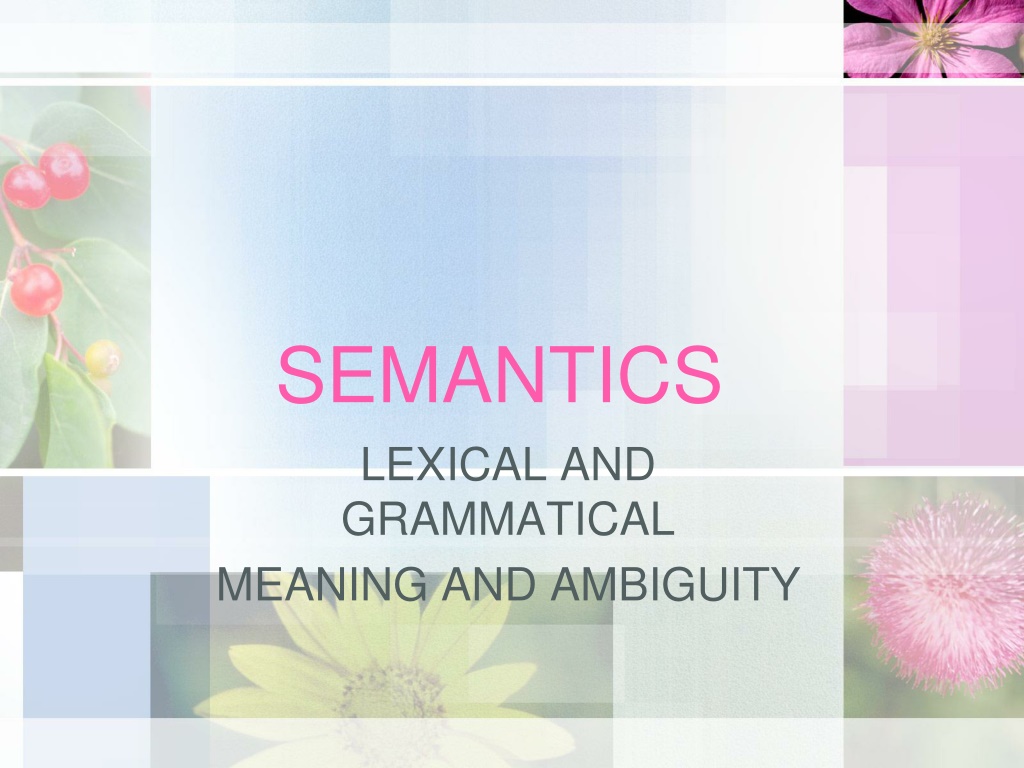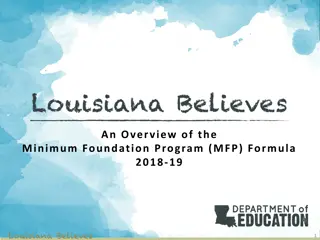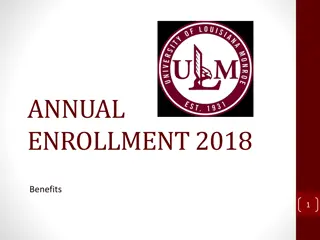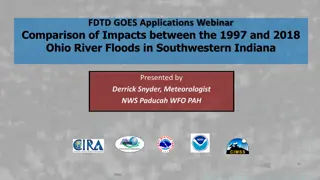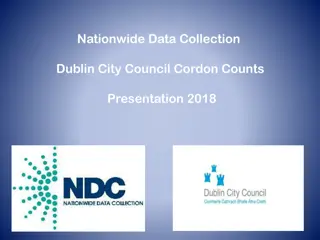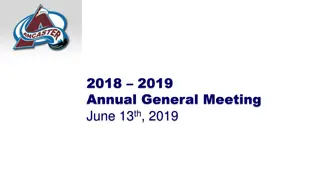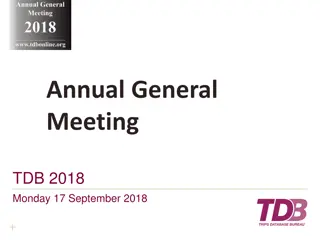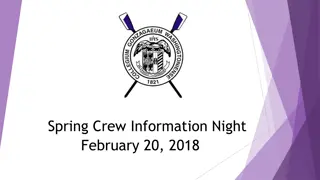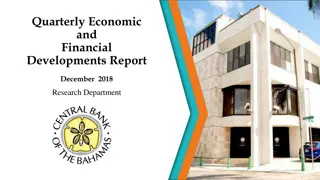Semantics, Lexical, and Grammatical Meaning
Exploring the nuances of semantics, lexical meaning, and grammatical meaning, this content delves into the distinctions between them, the role of lexemes, and the complexities associated with words. It discusses the various kinds of meanings expressed at the lexical and grammatical levels, including different functions subsumed under grammatical meaning. The content also compares the meanings of lexical and grammatical items, highlighting the traditional views on their respective meanings and the factors influencing their interpretations.
Download Presentation

Please find below an Image/Link to download the presentation.
The content on the website is provided AS IS for your information and personal use only. It may not be sold, licensed, or shared on other websites without obtaining consent from the author.If you encounter any issues during the download, it is possible that the publisher has removed the file from their server.
You are allowed to download the files provided on this website for personal or commercial use, subject to the condition that they are used lawfully. All files are the property of their respective owners.
The content on the website is provided AS IS for your information and personal use only. It may not be sold, licensed, or shared on other websites without obtaining consent from the author.
E N D
Presentation Transcript
SEMANTICS LEXICAL AND GRAMMATICAL MEANING AND AMBIGUITY
TODAYS OVERVIEW Grammatical Ambiguity Lexical Meaning Lexical Ambiguity Grammatical Meaning Lexical & Grammatical Meaning
Lexical Meaning Lexical meaning is concerned with the identification and representation of the semantics of lexical items. Fries draws a distinction between 'lexical and 'Structural' meanings . Major parts of speech have 'lexical' meaning; and this is given in the dictionary associated with grammar.
((A dog barked)) The meanings of dog and bark are lexical meanings. They are lexemes. A lexeme is a minimal unit that can take part in referring or predicating. The term lexeme was proposed by Lyons (1977:18 25) complexities associated vague word word. to avoid the with
going went go gone Lexeme (go)
Grammatical Meaning ((A dog barked)) The sentence has several kinds of grammatical meanings. The grammatical system of English makes possible the expression of meanings like these: 1) Did a dog bark. 2) A dog did not bark. 3) A dog barks. 4) Some dogs barked. 5) The dog barked.
Grammatical meanings are expressed in various ways:
Lexical and Grammatical Meaning Three functions are subsumed by Fries under the term grammatical meaning . The three different kinds of meaning' are: different kinds of semantic Meaning of grammatical item Meaning of grammatical functions Meaning associated with notions as declarative, interrogative or imperative sentences
Lexical and Grammatical Meaning Is there any difference between the meaning of grammatical and lexical items? To answer this question certain points should be mentioned: lexical items are traditionally said to have both 'lexical' and 'grammatical meaning . Grammatical items are generally described as having only grammatical meaning Grammatical choices have to do with spatial and temporal reference and causation..etc
Lexical and Grammatical Meaning The second class in the structure of English to which Fries have applied the term structural meaning is exemplified by notions as subject , object and modifier . Chomsky has suggested that it is the functional notions subject- object-of , predict-of , and main-verb- of , which constitute the principal deep-structure relations lexical items. between
Lexical and Grammatical Meaning Many of the relationships between particular classes of lexical items, i.e bird: fly, fish: swim, drive: car, blond: hair , cannot be stated except by means of an ad hoc set of projection rules, within the framework of transformational syntax outlined by Chomsky.
Lexical and Grammatical Meaning The third class of meanings which are commonly described as grammatical may be exemplified with reference to the difference between: Declarative Interrogative imperative
Lexical and Grammatical Meaning In recent transformational theory, there has been a tendency to introduce into the deep-structure phrase-markers of sentences such grammatical elements as 'question-marker' and 'imperative- marker', and then to formulate the rules of the transformational component in such a way that the presence of one of these 'markers' will 'trigger off' the appropriate transformational rule.
Lexical and Grammatical Meaning We are not concerned here with the syntactic advantages of this formulation of the distinction between various 'sentence-types', but with its semantic implications. These 'markers' are semantically similar to the lexical and grammatical elements which occur as constituents of the nuclei of sentences. For instance, the 'imperative-marker' would be listed in the dictionary with an entry 'that represents it as having roughly the sense of "the speaker requests (asks, demands, insists, etc.) . But this suggestion rests upon a confusion in the term 'meaning'.
Lexical & Grammatical Ambiguity Ambiguity is a linguistic condition which can arise in a variety of ways. There are three main forms of ambiguity; Phonetic, grammatical and lexical. 1-Ambiguity may result in spoken language from the phonetic structure of the sentence. For example, there was once a noun near meaning kidney but it is not used anymore because it could be confused with an ear.
Lexical & Grammatical Ambiguity 2-Grammatical ambiguity is the result of two possibilities: Ambiguousness of grammatical forms or from the structure of the sentence. 3-The most important type of ambiguity is that due to lexical factors; polysemy and homonymy.
Grammatical Ambiguity AMBIGUOUSNESS OF GRAMATICAL FORMS 1. Some prefixes and suffixes have more than one meaning which will lead to misunderstandings; desirable, readable, debatable. 2. Form-words may also have several meanings which may result in confusion in some contexts. -Will you join us for dinner tomorrow? -Do you mean you in the singular or in the plural?
Grammatical Ambiguity AMBIGUOUSNESS FROM THE STRUCTURE OF THE SENTENCE: Here the individual words are unambiguous but their combination can be interpreted in two or more different ways. I met a number of old friends and acquaintances
Lexical Ambiguity In countless cases more than one sense will be connected with the same name: s2 s1 s3 n This polyvalency of our word may take two different forms: POLYSEMY HOMONYMY
POLYSEMY Polysemy is a fundamental feature of human speech, which can arise in a multiplicity of ways. 1- Shifts in application our words have a number of different aspects according to the context in which they are used. Some of these aspects are purely ephemeral; others may develop into permanent shade of meaning which may lead to regard them as different senses of the same term.
POLYSEMY Shifts in application are noticeable in the use of adjectives since these are often change their meaning according to the noun they qualify. Conduct: Fitting, seemly. Gallant, brave Generous, magnanimous. Sizes, sums: Fair, moderately large. Ample, liberal, munificent.
POLYSEMY Persons: skilled, clever proper, fitting, decent Beautiful, dignity, brave Concretes: Easy to handle Of fair size Beautiful with dignity Proper Actions, speech: Appropriate clever, brave
POLYSEMY 2- Specialization in a social milieu: In every situation, in every trade or profession, there is certain idea which is so much present to one s mind, so clearly implied that it seems unnecessary to state it when speaking . (Michel Breal) Legal action Lawyer action Military operation soldier action
POLYSEMY 3.Foreign influence: A way in which language can influence another is by changing the meaning of an existing word. e.g. Parlement (French word that means parler to speak ), and then came to denote a judicial court , acquired at a later date, under the influence of English parliament, its modern sense changed legislative assembly
Polysemy There are a number of special safeguards which help to mitigate the consequences of polysemy: 1. The usage of grammatical gender, this can be used to differentiate between meanings of the same word. 2. The use of inflexion. English brother has two plurals with different senses: brothers and brethren .
POLYSEMY 3. Word-order may help to discriminate between different senses of the same term. The mobility of adjectives for example. 4. The meaning of a word is clarified by adding another word to it; fair fair-sized, fair-minded. 5. The weakening or destroying the unity of the word, is to distinguish between meanings by slight modification in form; phonetic, graphic. e.g. discreet// discrete.
Homonymy Two or more different words may be identical in sound. There are three ways in which it can arises: 1. Phonetic convergence Two or more words which once had different forms coincide in in the spoken language and sometimes in writing. Old English melo <meal flour Old English m l <meal repast | mi:l |
Homonymy 2.Semantic divergence When two or more meanings of the same word drift apart to such an extent that there will be no obvious connection between them, polysemy will give place to homonymy and the unity of the word will be destroyed.
Homonymy Sole bottom of a shoe; name of a fish Sole Sole name of a fish bottom of a shoe
Homonymy 3.Foreign influence: When a loan-word becomes firmly established in its new surroundings it will be adapted to the local phonetic system and will take part in the normal sound-changes; it thus may coincide with other words in the receiving language.
